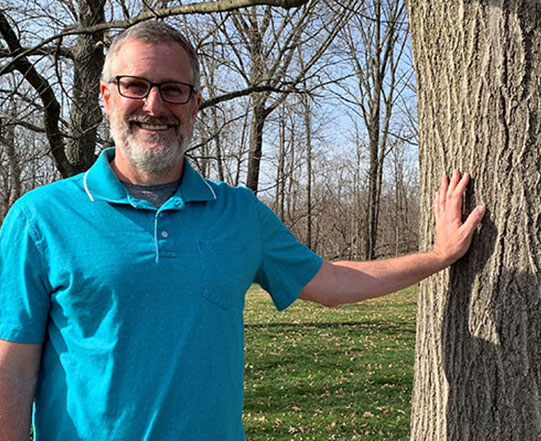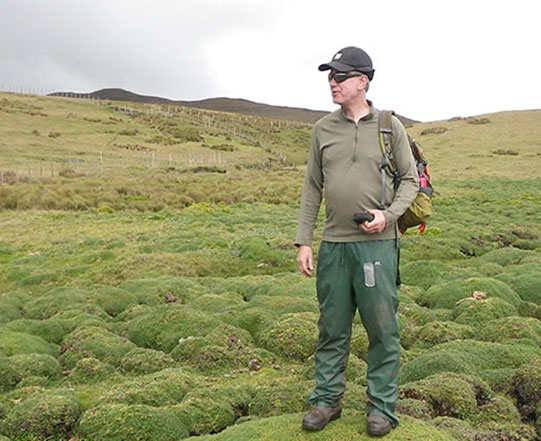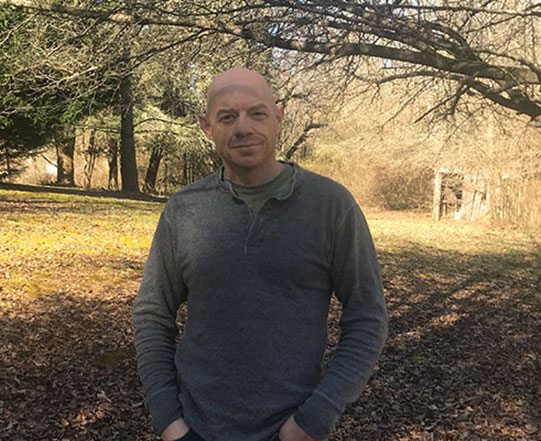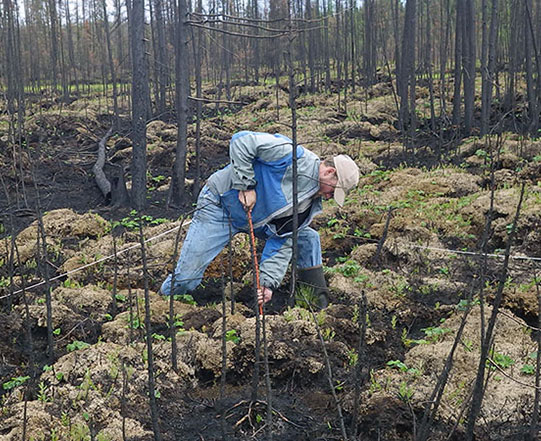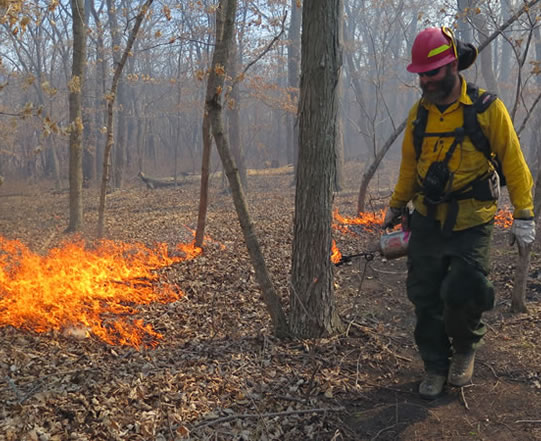Northern Research Station
 In the most forested and the most populated region of the United States, USDA Forest Service science is contributing to healthier forests and communities. I am Dr. Cynthia West, Director of the USDA Forest Service Northern Research Station and the Forest Products Laboratory, and I am delighted to share this presentation of our notable scientific achievements from 2021.
In the most forested and the most populated region of the United States, USDA Forest Service science is contributing to healthier forests and communities. I am Dr. Cynthia West, Director of the USDA Forest Service Northern Research Station and the Forest Products Laboratory, and I am delighted to share this presentation of our notable scientific achievements from 2021.
Collaboration with land managers in the National Forest System and on state, tribal and local lands is the foundation of our work. We collaborate with landowners to develop research that addresses the issues with which they are contending. The Northern Research Station continues to deliver timely scientific knowledge and tools that land managers need during a time of unprecedented changing conditions.
Six “Director’s Choice” highlights address compelling subjects in natural resource management, including the invisible resource that is forest soil carbon storage, low-cost technology to aid in understanding conditions favorable to fire, ensuring clean water, being prepared for invasive insects, discovering the positive effects of nature on human health, and understanding how a new generation perceives forest products. This is the science we are doing to support a sustainable future. It reflects our commitment to the Earth, the forests of the Northeast and Midwest, and present and future generations of Americans.
Our Research Highlights presentation offers a snapshot of the work of the Northern Research Station. You can keep up with NRS science throughout the year by following us on Twitter (@usfs_nrs), and our website (www.nrs.fs.usda.gov) has more detail on research, publications and science delivery.
This presentation offers our “best-of-the-best” research in 2021. I am grateful to the teams that produced it and to all of the partners who contributed to doing science that benefits people and the environment.
Northern Research Station Locations
NRS at a Glance
| Research Work Units: | 13 |
|---|---|
| Research Locations: | 22 |
| Experimental Forests: | 22 |
| Research Scientists: | 111 |
| Employees: | 324 |
| NRS Footprint | |
| National Forests |
 Director's Choice Highlights
Director's Choice Highlights
The following six highlights were selected as the "Director's Choice" for 2021.

 Managing Forests for Soil Carbon: Protecting an Invisible Resource
Managing Forests for Soil Carbon: Protecting an Invisible Resource
Sure, we already knew that forest harvesting impacts on soil carbon in the Lake States were variable, but for the first time, we now know why, where, and what can be done about it. This work supports the professionals who manage the largely invisible but critically important soil resources that sustain society’s need for food, fiber, and fuel in a region where forestry is a $60 billion per year industry and employs more than 125,000 people.

 What do Millennials Think about Wood Products?
What do Millennials Think about Wood Products?
The millennial generation is now the biggest generation in the United States workforce and is a major driving force of the economy. A Northern Research Station scientist and her partners sought to determine how the millennial generation perceived wood products. The findings are promising for the industry.

 Low-cost Technology Allows Managers to Measure Fuels and Fire Effects with the Push of a Button
Low-cost Technology Allows Managers to Measure Fuels and Fire Effects with the Push of a Button
Wildfire and prescribed fire change the forest in many ways. Land managers need data about these changes but traditional methods for measuring them are tedious, expensive, and dangerous, often limiting the feasibility of collecting data at scales necessary to employ the best available science in management. Is it possible to revolutionize these measurements with the push of a button?

Land use changes have disrupted terrestrial water cycles and impacted water quantity and quality across the Great Lakes Basin. Funded by the Great Lakes Restoration Initiative (GLRI) to optimize ecological restoration, a project led by Northern Research Station researchers resulted in the development of the world’s largest phytotechnologies field-testing network, which consists of 16 agroforestry phytoremediation buffer systems (i.e., phytobuffers) in the Lake Superior and Lake Michigan watersheds.

 Invasion by Nonnative Insects Expected to Increase 36 percent Worldwide by 2050
Invasion by Nonnative Insects Expected to Increase 36 percent Worldwide by 2050
Over the course of the last two centuries, numbers of biological invasions have steadily increased globally. A newly developed mathematical model indicates that trend is likely to continue. Numbers of invasions will increase by 36 percent between 2005 and 2050, with forecasts suggesting that Europe is likely to experience the most biological invasions, followed by Asia, North America, and South America.

 Tree Canopy Cover and Perceived Park Access Have Benefits for Cardiovascular Health
Tree Canopy Cover and Perceived Park Access Have Benefits for Cardiovascular Health
Could a nature-based solution help address cardiovascular disease, the leading cause of death in the United States? To find out, a Northern Research Station scientist and her partners completed one of the first studies that examined the associations between perceived and objective residential greenness measures and cardiovascular disease across neighborhood sociodemographic groups.
2021 Research Highlights
The Northern Research Station's science is complex, but the need for the research is simple. Land managers, city planners, and policy-makers need sound science on all aspects of the natural world and its complex connections with people to achieve decisions resulting in a healthy and sustainable future for present and future generations of Americans. The following Research Highlights reflect some of our best work in support of these goals in 2021.

How Does Forest Canopy Management Really Affect Wildfire Behavior?
Reducing fuel loads in forested environments through mechanical thinning and prescribed burning can be effective strategies to reduce the future risk of extreme wildfire behavior. But other environmental factors may lead to unintended wildfire behavior in areas where fuel loading has been reduced.

Who owns the nation’s forests, and why? What do they plan to do with the millions of acres of forest land they control? These are critical questions for the future of the nation’s forests, and Brett Butler’s new book, “America’s Family Forest Owners,” synthesizes over 20 years of experience dedicated to addressing these issues.

Peatlands, one of the most powerful carbon sinks in nature, have been drained by thousands of kilometers of Minnesota ditches for about 100 years. To inform prioritization of peatland restoration, Northern Research Station scientists and partners estimated and mapped peat loss from ditching of Minnesota peatlands, establishing that loss of about 165 million cubic meters of peat has resulted in a loss of 3.8 million metric tons of carbon. Scientists developed a map that could inform prioritization of peatland restoration projects as part of natural climate solutions.

Brown-headed nuthatches disappeared from Missouri in the early 1900s with the loss of most of the region’s pine woodland. After years of pine woodland restoration on the Mark Twain National Forest, the next step was to return the brown-headed nuthatch to the state. Forty-six of the birds were translocated from Arkansas to Missouri in 2020, and another 56 were released in August 2021.
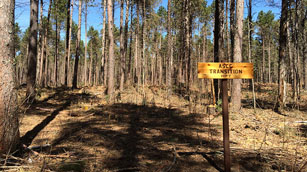
Pine forests in northern Minnesota take decades to develop naturally, but climate change is causing rapid, unprecedented changes. Managers need science to support decisions about which species of trees to plant for the future and how to manage them to provide the goods and services people want from these forests. Research using computer simulation models can provide this guidance without waiting decades for the answers.

Past Data Solve New Problems: Silviculture Studies Inform Carbon Management
Long-term studies on forest growth and development in Experimental Forests, begun before climate change and carbon storage were priorities, are helping to address emerging questions about forest carbon management.

An Ounce of Prevention Could Help Cure Immeasurable Future Forest Threats
Many alien insects, diseases, and weeds threaten our forests. What can be done to stop them? An international team of scientists identified research needed to improve approaches to preventing new pests from arriving and responding when new species invade.

Urban forests can help communities adapt to and reduce the effects of climate change, but these forests are also vulnerable to changes in climate. The Northern Research Station and partners developed a menu of actions to adapt urban forests to climate change while also improving human health and well-being.
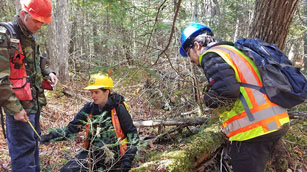
Study of Carbon Storage Bridges the Gap Between Research and Application
Questions are swirling around fundamental understanding of how forest management can positively affect the U.S. carbon balance over the long run. Data collected over more than six decades helped scientists determine effects of different approaches to forest management on carbon stored in living trees, deadwood, and wood products.

Adapting to Crisis: Understanding Public Land Use and Stewardship during the COVID-19 Pandemic
The COVID-19 pandemic and increased recognition of structural inequality and systemic racism have profoundly affected U.S. society since March 2020, including through higher and changed recreational use of forests and parks and the need for managers to quickly adapt to ensure public safety and inclusion. These twinned crises revealed underlying inequities and vulnerabilities that cause people to experience risk and interact with public lands in different ways that affect their health and well-being.

FIA Develops a Rapid Assessment Method to Deliver Fast Answers to Questions About Storm Damage
Severe weather events are becoming more common, increasing the potential for damage and mortality in forests. Decision-makers at all levels need rapid yet reliable estimates of storm damage to inform disaster funding and to guide response efforts. With its expansive network of permanent plots, the Forest Inventory and Analysis (FIA) program is uniquely poised to be a reliable source of answers.

Tool for Prioritizing Leachate Contaminants Enhances Traditional and Green Landfill Remediation
Landfill leachate can contain thousands of contaminants that may pose risks to human health and the environment if transported offsite. A barrier to remediating leachate contamination has been the lack of a comprehensive (and affordable) approach to identifying and selecting leachate contaminants to target with remediation activities. A team led by the Northern Research Station developed a systematic pollutant prioritization tool that can be used anywhere in the United States to increase the efficiency of landfill remediation efforts.

Forest managers in the Eastern Region of the USDA Forest Service are making decisions today that will influence the next century of the region’s forests, and they need the best available science as they make those decisions. Their need for convenient and timely connection to that science is equally profound. The Northern Research Station is meeting that need by delivering Station science via webinars, a newsletter, and a science round-up that are all part of a new science delivery platform called Rooted in Research.

Many grassland birds have experienced severe declines in the past decades and understanding whether different management regimes could halt or reverse species declines is an important conservation challenge. In collaboration with the Midewin National Tallgrass Prairie, Northern Research Station scientists are investigating whether bison can play a role in habitat restoration and support their historic companions, grassland birds.

Exploring Drivers of Change in Forest Ecosystems from the Tree to the Globe
How are human activities and natural disturbances contributing to changes in tree population dynamics and associated forest carbon stocks and stock changes? A combination of natural disturbances and human activities have led to a slow decline in the forest carbon sink in the United States, however carbon stocks are increasing substantially on a global scale. Understanding how human and natural drivers are impacting forest ecosystems today will help to inform the potential and limitations of these ecosystems in the future.

Supporting Nature-Based Climate Solutions with Strategic-Level Forest Inventory
What is the potential for the land sector to mitigate climate change? How much carbon are forests sequestering each year? What is “improved forest management” and how can these activities enhance carbon sequestration capacity in forests? These are just a few of the questions that the strategic-level forest inventory in the United States is helping to address as humanity tackles the climate crisis.

Collaboration Seeks to Improve Habitat for Minnesota’s Iconic—and Imperiled—Moose Population
Moose hold an iconic status in Minnesota, but they need help. Parasites and disease, food availability, habitat quality, and changing environmental conditions brought on by a warming climate are some of the possible factors that have contributed to more than 60 percent decline in moose numbers over the past decade. A collaboration that includes the Northern Research Station is taking an all-lands approach to identifying how management can lead to improved moose foraging and cover habitat under both current and future forest conditions.

Future Forests, Water, and Quality of Life in Northeastern Minnesota
It is difficult to accurately envision the future, especially when considering the complex interplay among forests, water, urban centers, and people. Scientists worked with local stakeholders to develop scenarios to guide landscape modeling of four distinct possible futures for forests, water, and people in and around Duluth, MN.

Current ozone air quality standards are set using data from previous studies on human health and from common tree species. However, it was unknown whether current ozone standards harm herbaceous species, especially species important to the Forest County Potawatomi Community. A Northern Research Station scientist tested varying ozone levels on 12 herbaceous plants that are common in the Great Lakes Region and are culturally important to the Forest County Potawatomi Community.




